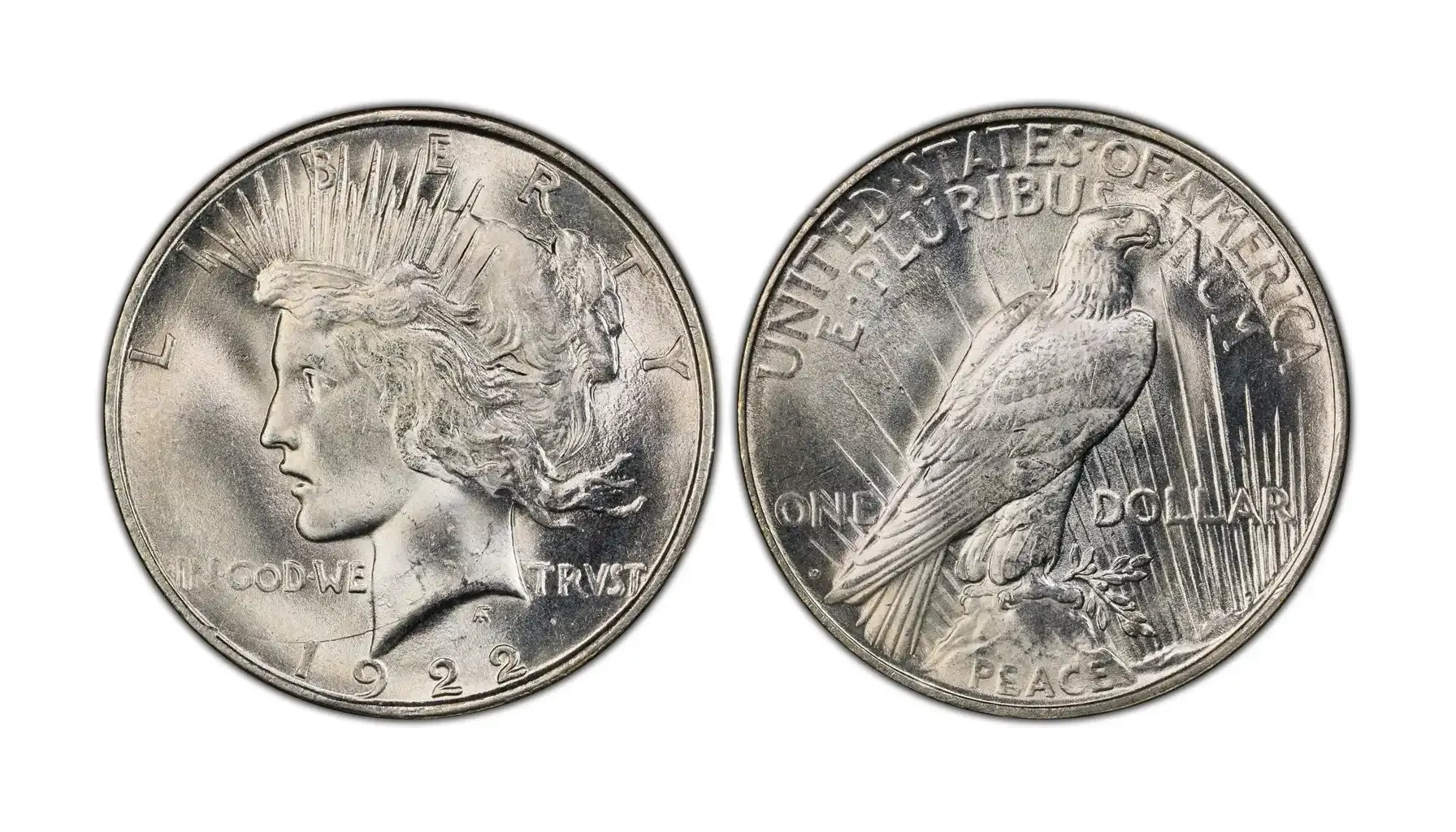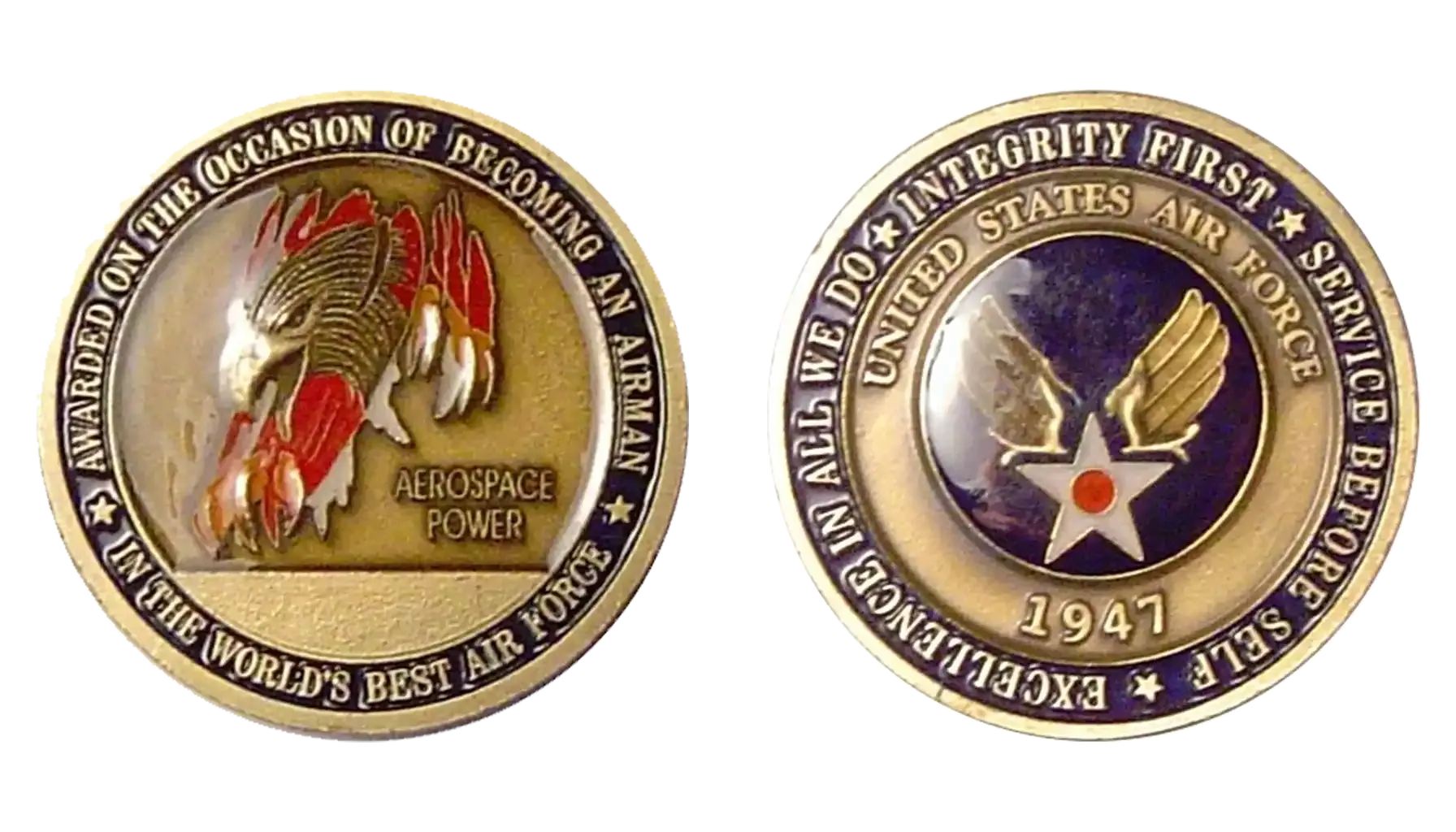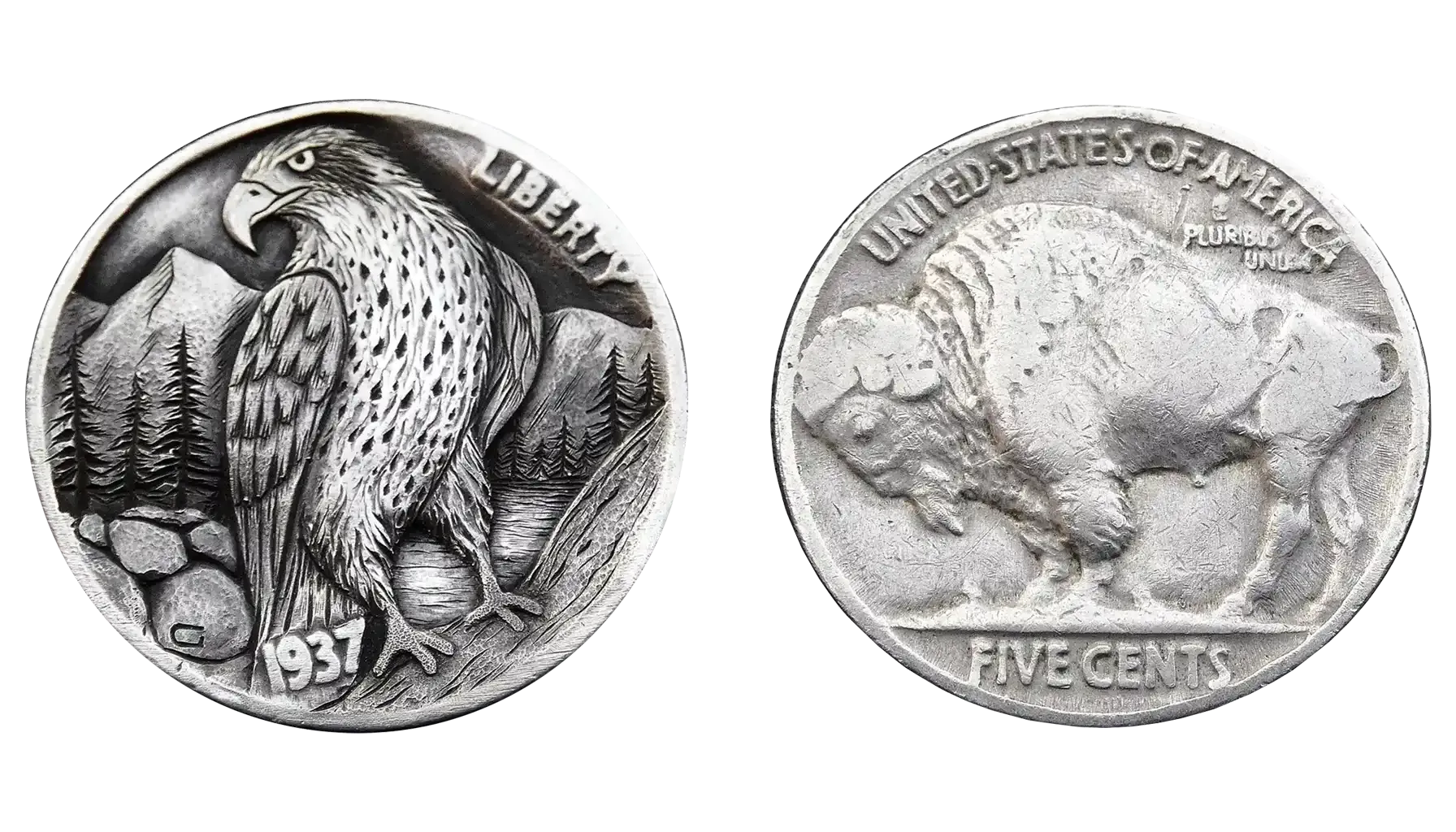Contents:
Are you wondering about the 1941 penny and its value? You are not alone. Many collectors and coin enthusiasts are curious to know how much is a 1941 wheat penny worth. This coin is famous among Lincoln wheat cents and continues to attract both beginners and experienced collectors.
In this article, you will learn all about the 1941 penny, its price guide, why it is still important today, and what the best coin identifier is.
What Is a 1941 Penny?
A 1941 penny is a one-cent coin from the United States. It is also known as a 1941 wheat one because of the wheat ears on its back. This is part of the Lincoln cent series, which began in 1909. People sometimes look for the 1941 wheat penny no mint mark, 1941 d wheat one, and 1941 s one.
A 1941 Canadian coin also exists, but it is different from the American version. This article focuses on the US 1941 Lincoln penny and its value.
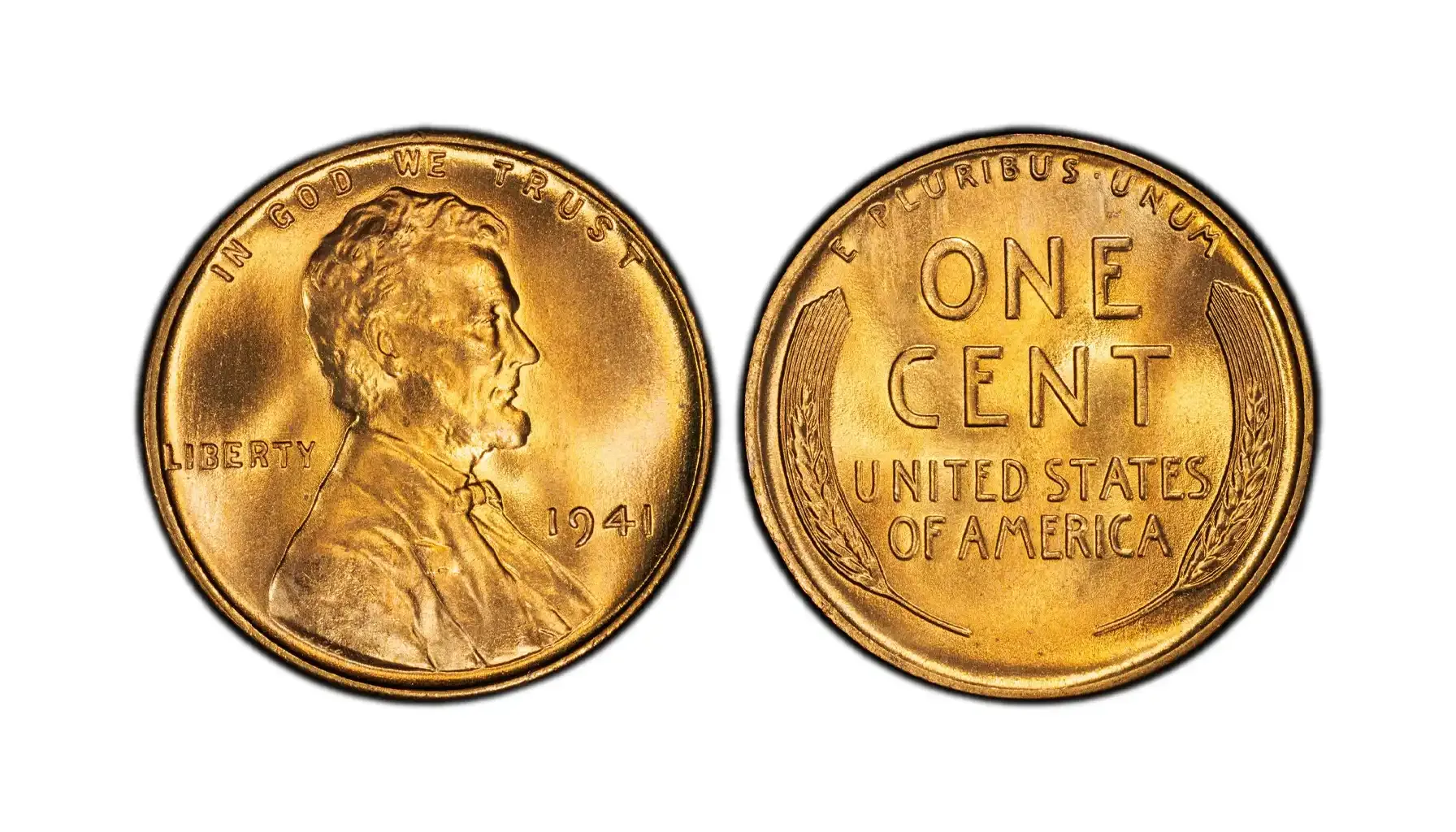
1941 Penny Meaning and Symbolism
Obverse (Front): The front of the coin has a portrait of President Abraham Lincoln. This design was made to honor the 16th President of the United States. The word "LIBERTY" is on the left, and the date "1941" is on the right. If there is a mint mark, like "D" for Denver or "S" for San Francisco, it will be below the date.
Design: The Lincoln portrait was created by Victor D. Brenner. The overall look is simple and elegant. It is part of the wheat cent series, which ran from 1909 to 1958.
Message: The 1941 coin carries the message of "IN GOD WE TRUST" at the top. This is a strong symbol of American tradition and faith.
Reverse (Back): The back shows two wheat stalks on each side, which is why many call it the 1941 wheat coin. The words "ONE CENT" and "UNITED STATES OF AMERICA" are in the middle. At the top, you will see "E PLURIBUS UNUM," meaning "Out of many, one." The wheat imagery stands for prosperity and growth.
A Bit of History
The 1941 coin comes from the time just before the United States entered World War II. During this period, the country was recovering from the Great Depression. Pennies were common in daily use. In 1941, there was no 1941 steel penny. The famous steel coin only came in 1943 because copper was needed for the war effort.
Millions of 1941 wheat pennies were made in Philadelphia (1941 no mint mark penny), Denver (D), and San Francisco (S) mints. These coins are often found in old collections, sometimes even in change today. But some rare errors and higher grades make certain 1941 wheat pennies much more valuable.
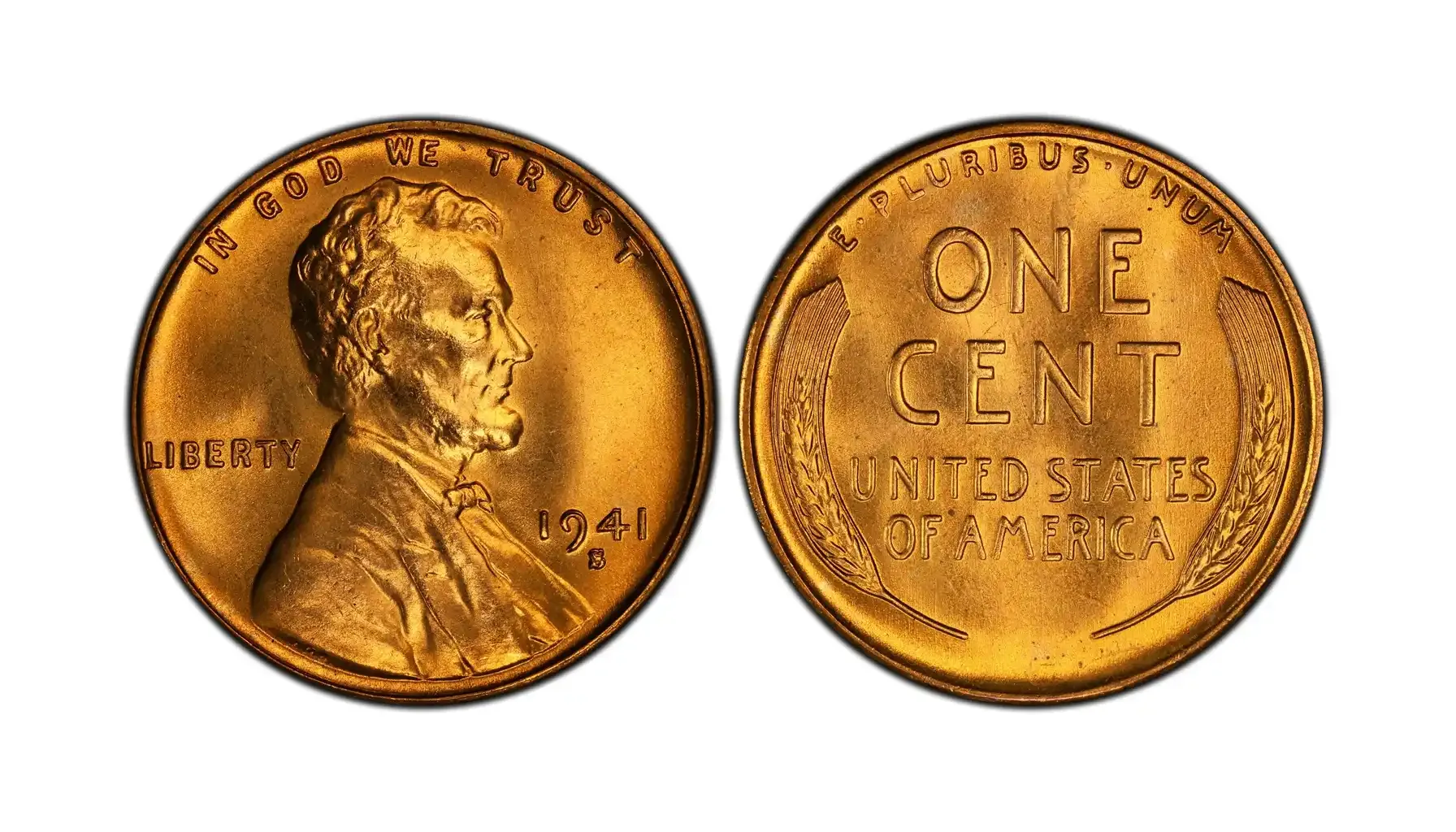
1941 Penny Price Guide
The value of a 1941 one depends on its condition and mint mark. Most 1941 wheat pennies are not rare, but some can be valuable if they are in perfect shape or have unique errors. Here is a simple table (coins are graded on the Sheldon scale) showing the average values for different types:
1941 Wheat Penny Value | Good (G) | Fine (F) | Extremely Fine (EF) | Uncirculated (MS60+) |
1941 No Mint Wheat Penny Value | $0.05 | $0.10 | $0.50 | $1–$5 |
1941 D Wheat Penny Value | $0.05 | $0.10 | $0.75 | $2–$7 |
1941 S Penny Value | $0.05 | $0.15 | $1 | $3–$10 |
1941 Wheat Penny Error | varies | varies | $5–$200+ | $15–$1000+ |
Note: Values can change with the coin market. Rare errors or very high grades can bring much more.
Market Factors That Influence the Value
Several things affect the 1941 wheat one value:
Condition: Coins with less wear are worth more. Uncirculated coins can bring much higher prices.
Mint Mark: Pennies from Denver (1941 D wheat one) and San Francisco (1941 S wheat penny value) may be worth more than the common Philadelphia (1941 wheat penny value no mint mark).
Errors: Error coins like double dies or off-center strikes are rare. The 1941 wheat coin error coins are especially valuable. The value of 1941 wheat coin errors can go into the hundreds of dollars if rare.
Rarity and Demand: If many collectors want a certain type or error, prices go up. Common coins, like most 1941 no mint mark wheat penny pieces, are easier to find and usually less valuable.
Historical Interest: Coins from important years, like the start of World War II, may be more interesting to collectors.
You also may have other valuable coins, and don’t even know about it. So, check it right now!
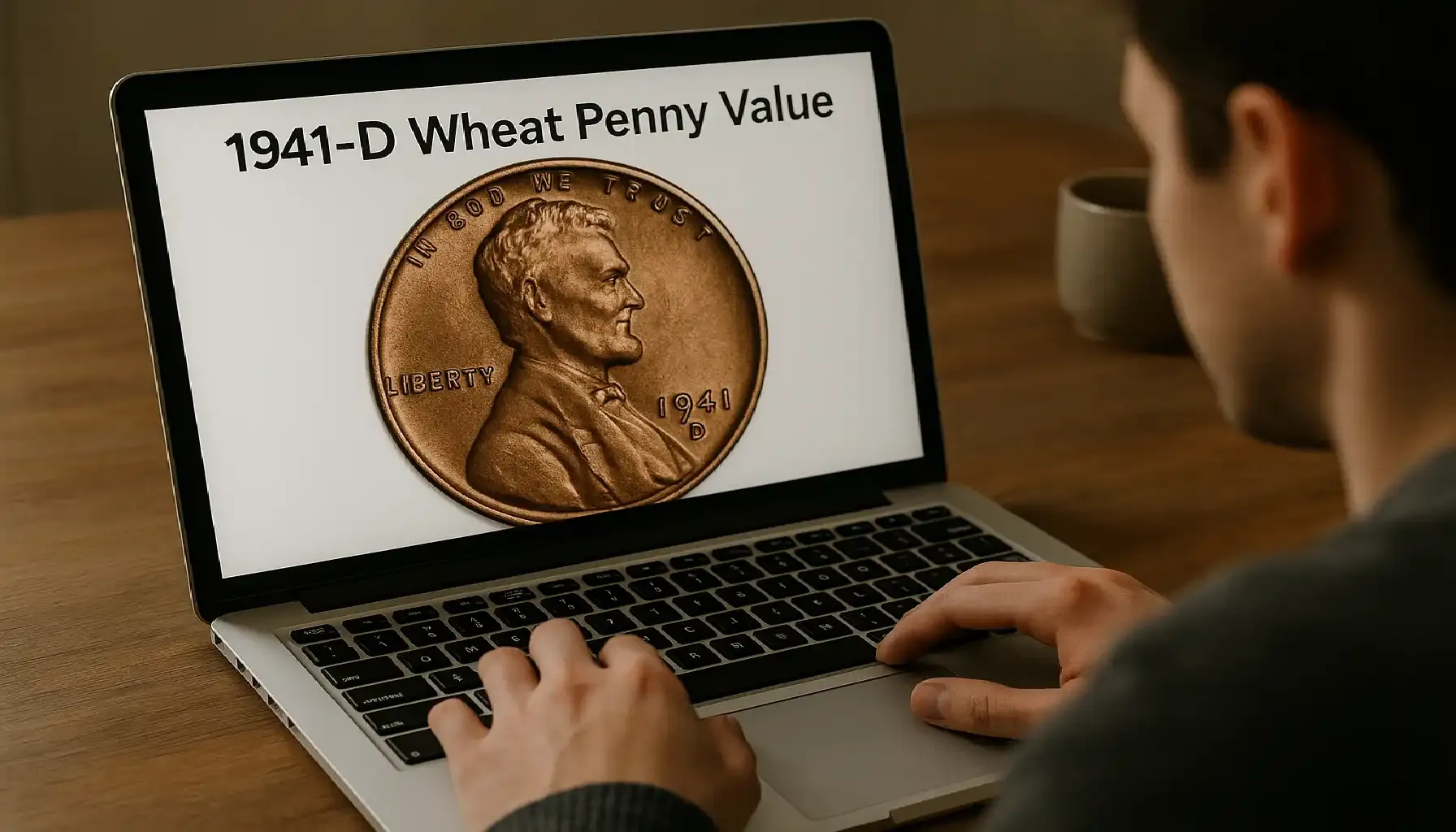
Errors
1. Doubled Die Obverse (DDO)
Strong doubling on the obverse, especially on:
“IN GOD WE TRUST”
“LIBERTY”
Date “1941”
Value:
Circulated (VF–XF): $150–$500
Uncirculated (MS64–MS66RD): $2,000–$9,000+
Top Grade (MS67RD): up to $35,000
2. Die Cap Error
Coin sticks to the die and repeatedly strikes new planchets, forming a “bottle cap” shape.
Value: $500–$2,000+
Rarity: Very rare for 1941 cents; extremely collectible when authenticated.
3. Off-Center Strike
The coin is struck significantly off-center, with 5–90% of the design missing.
Value:
Minor Off-Center (5–10%): $20–$100
Major Off-Center (50%+ with full date visible): $300–$800+
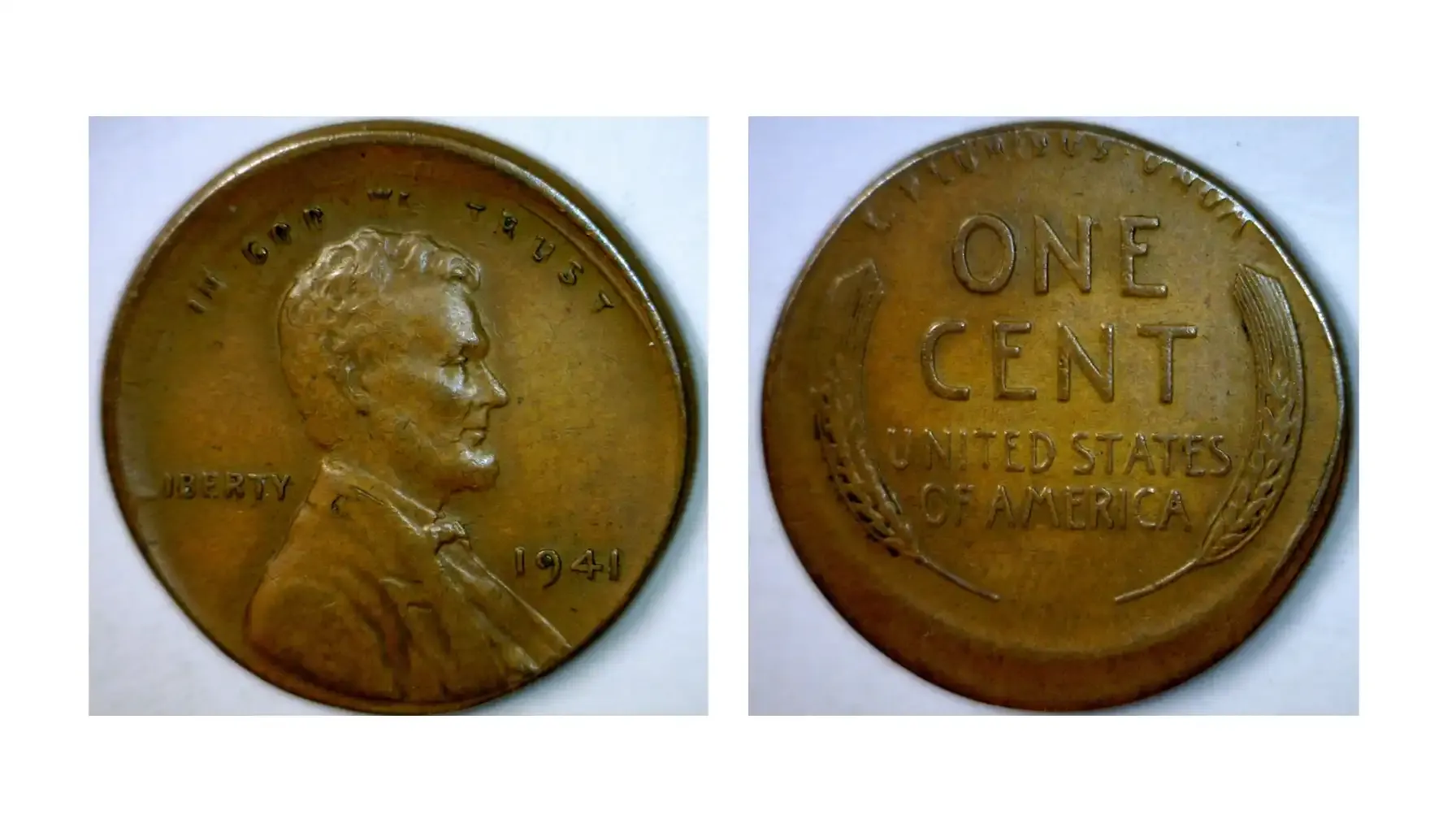
4. Broadstrike Error
Coin is struck outside the collar, causing a spread-out, flattened appearance.
Value: $100–$300 depending on grade and how dramatic the spread is.
5. Repunched Mint Mark (RPM)
Seen primarily on 1941-D and 1941-S cents, where the mint mark was punched more than once.
Value:
Common RPMs: $10–$50 (not a 1941 penny worth million dollars)
Scarcer varieties (like D/D North, S/S Tilted): $100–$300+
Where to Find a 1941 Penny for Sale
If you want to buy a 1941 wheat one, you have many choices:
Coin Shops: Local coin shops often have wheat one 1941 coins. You can see the coin in person and ask questions.
Coin Shows: Coin shows are good places to find rare or high-grade coins. Dealers may have hard-to-find 1941 pennies or error coins.
Online Marketplaces: Websites like eBay, Heritage Auctions, and other numismatic sites list 1941 Lincoln one coins for sale. You can see photos, grades, and price history.
Collectors: Sometimes, private collectors have a 1941 no mint wheat one or an unusual 1941 steel coin for sale.
Be sure to buy from trusted sellers, especially if you want a valuable coin or a 1941 wheat coin error.
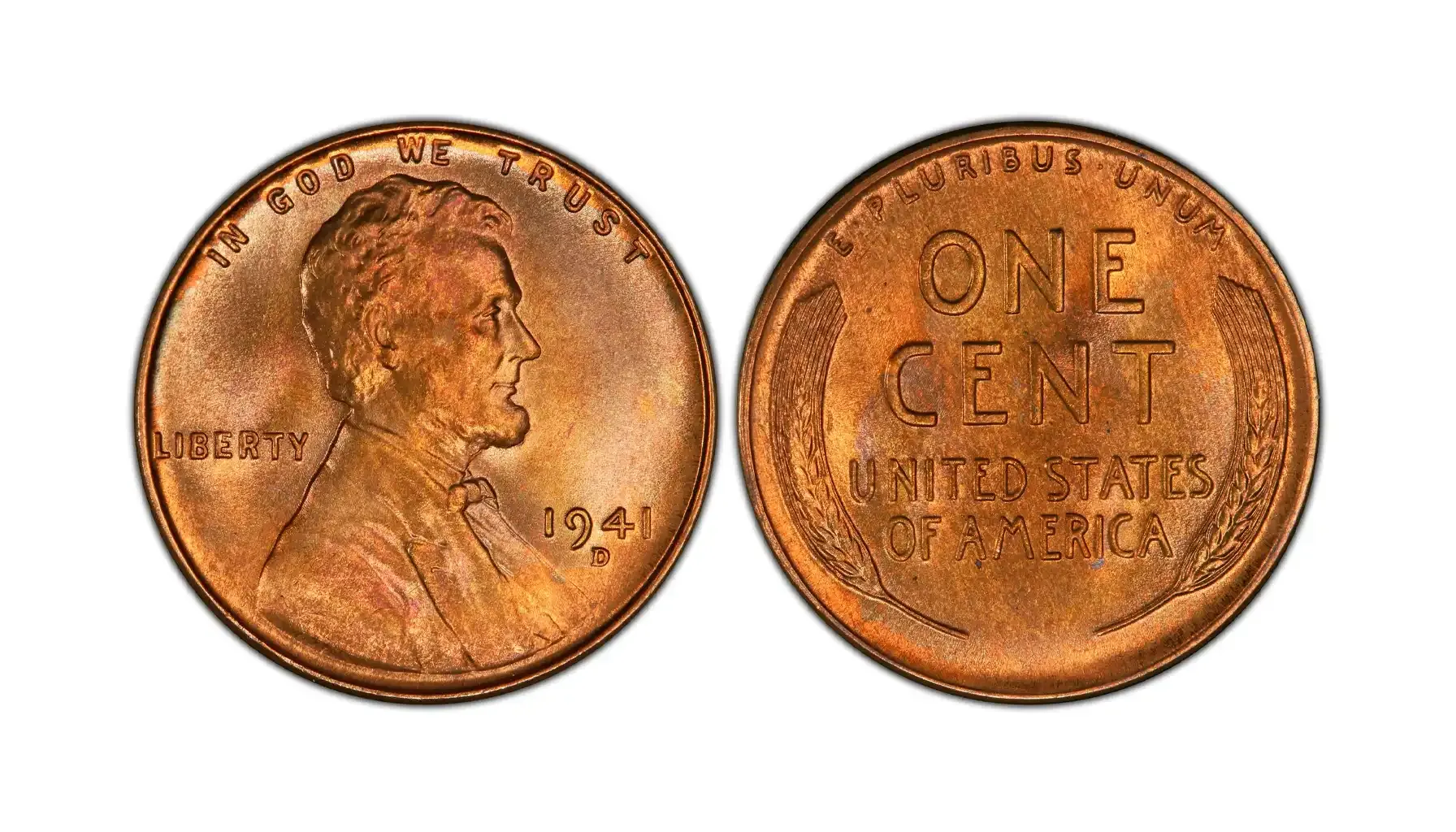
How to Identify and Evaluate Your Coin
To know how much is a 1941 penny worth, you need to check a few things:
Mint Mark: Look under the date for a D (Denver), S (San Francisco), or no letter (Philadelphia). Each one can change the 1941 penny value.
Condition: Is the coin shiny with no scratches, or does it have lots of wear? The less wear, the more it is worth.
Errors: Look closely for anything unusual. Double letters, extra numbers, or off-center strikes are all signs of a 1941 wheat one error.
Authentication: If you think you have something rare, like the most valuable 1941 wheat penny value, consider having it checked by a grading service. They can confirm if your coin is real and give it an official grade.
Knowing these steps will help answer: “Is a 1941 wheat penny worth anything?”, and what is a 1941 wheat coin worth in your collection. There are also some other coins that will make you rich.
Notable Auction Records
Date | Grade | Color | Mint Mark | Variety | Price (USD) | Auction House |
Jan 19, 2025 | MS68RD | Red | None | Regular | $15,600 | Heritage Auctions |
2013 | PR67RD | Red | None | Proof | $28,200 | Heritage Auctions |
2010 | MS66RD | Red | None | DDO | $9,200 | Heritage Auctions |
2023 | MS68RD | Red | D | Regular | $6,600 | Heritage Auctions |
2022 | MS64RD | Red | S | PL | $3,360 | Heritage Auctions |
2015 | PR67RB | Red/Brown | None | Proof | $3,525 | Heritage Auctions |
2011 | MS66RD | Red | None | DDO | $8,280 | Heritage Auctions |
2013 | MS65RD | Red | None | Regular | $4,994 | Heritage Auctions |
2020 | MS68RB | Red/Brown | D | Regular | $4,600 | Heritage Auctions |
2011 | MS66RD | Red | None | DDO | $7,475 | Heritage Auctions |
Unknown | MS67RD | Red | None | DDO | $35,000 | Major Auction |
Common Misconceptions About Wheat Penny 1941 Pieces
A lot of people believe the old copper pennies are always worth a lot, but most 1941 wheat pennies are still quite common. Here are some popular myths and the real facts:
Every 1941 penny is rare and valuable
The truth is, millions of these coins were produced. Unless your 1941 one has a mint error or is in near-perfect condition, it usually only adds a small amount to your collection’s value.
1941 pennies are made of silver or steel
Real 1941 pennies are made from 95% copper and 5% zinc. You might hear stories about a steel 1941 one, but those are likely fakes or confusion with the 1943 steel coin. If you find a steel-looking 1941 one, it’s best to check with an expert.
Cleaning increases the value
Many new collectors think that cleaning a coin of this type will make it look better, but professional collectors prefer original surfaces. Cleaning can actually lower its worth.
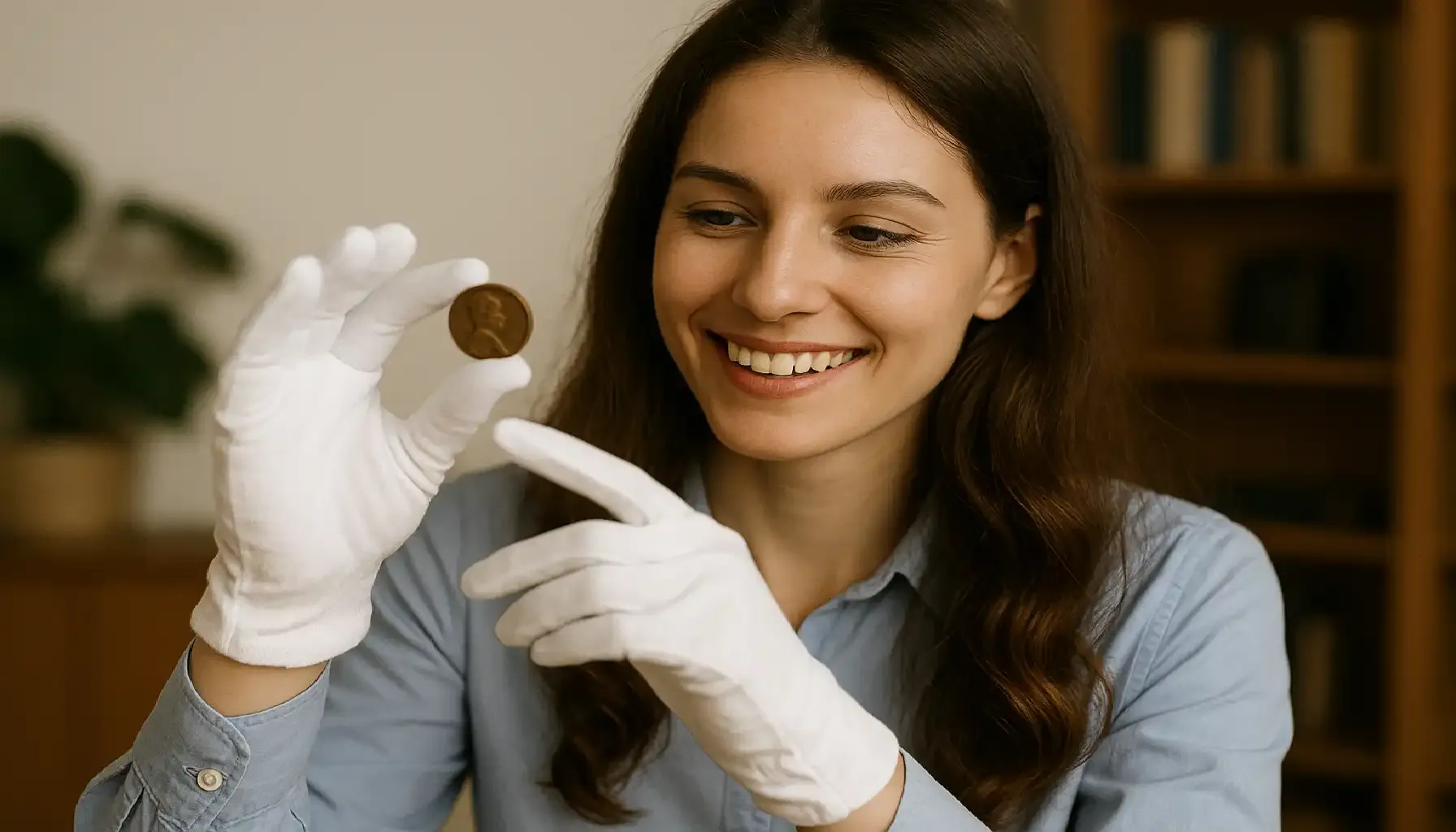
FAQs
What is a 1941 penny worth?
The value of a 1941 wheat one depends on its condition and mint mark. A typical 1941 wheat penny no mint mark value is usually between 5 and 35 cents in circulated condition.
Uncirculated examples or those with errors can be worth more, and rare mint errors sometimes fetch higher prices. Despite rumors, a 1941 one is not worth a million dollars.
How much is a 1941 penny D and S worth?
D one (from the Denver mint) and a S one (from the San Francisco mint) are also common, each typically valued between 10 and 75 cents depending on their state.
Uncirculated or high-grade coins, as well as pennies with significant mint errors, can be worth a few dollars or more.
What about a 1941 Canadian penny or a 1941 wheat penny error?
A Canadian one is generally worth a few cents to a couple of dollars depending on its condition.
If you find a 1941 wheat one with an error, such as a doubled die or an off-center strike, the value can increase significantly—sometimes ranging from a few dollars to over $100 for rare or dramatic errors.
It’s always a good idea to have error coins authenticated by an expert.

